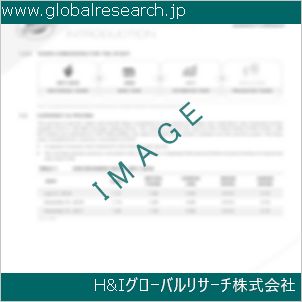Table of Contents
1 Industry Overview of Polyacrylicacid
1.1 Definition and Specifications of Polyacrylicacid
1.1.1 Definition of Polyacrylicacid
1.1.2 Specifications of Polyacrylicacid
1.2 Classification of Polyacrylicacid
1.3 Applications of Polyacrylicacid
1.3.1 Nuclear Application
1.3.2 Non-Nuclear Application
1.4 Industry Chain Structure of Polyacrylicacid
1.5 Industry Overview and Major Regions Status of Polyacrylicacid
1.5.1 Industry Overview of Polyacrylicacid
1.5.2 Global Major Regions Status of Polyacrylicacid
1.6 Industry Policy Analysis of Polyacrylicacid
1.7 Industry News Analysis of Polyacrylicacid
2 Manufacturing Cost Structure Analysis of Polyacrylicacid
2.1 Raw Material Suppliers and Price Analysis of Polyacrylicacid
2.2 Equipment Suppliers and Price Analysis of Polyacrylicacid
2.3 Labor Cost Analysis of Polyacrylicacid
2.4 Other Costs Analysis of Polyacrylicacid
2.5 Manufacturing Cost Structure Analysis of Polyacrylicacid
2.6 Manufacturing Process Analysis of Polyacrylicacid
3 Technical Data and Manufacturing Plants Analysis of Polyacrylicacid
3.1 Capacity and Commercial Production Date of Global Polyacrylicacid Major Manufacturers in 2023
3.2 Manufacturing Plants Distribution of Global Polyacrylicacid Major Manufacturers in 2023
3.3 R&D Status and Technology Source of Global Polyacrylicacid Major Manufacturers in 2023
3.4 Raw Materials Sources Analysis of Global Polyacrylicacid Major Manufacturers in 2023
4 Capacity, Production and Revenue Analysis of Polyacrylicacid by Regions, Types and Manufacturers
4.1 Global Capacity, Production and Revenue of Polyacrylicacid by Regions 2019-2024
4.2 Global and Major Regions Capacity, Production, Revenue and Growth Rate of Polyacrylicacid 2019-2024
4.3 Global Capacity, Production and Revenue of Polyacrylicacid by Types 2019-2024
4.4 Global Capacity, Production and Revenue of Polyacrylicacid by Manufacturers 2019-2024
5 Price, Cost, Gross and Gross Margin Analysis of Polyacrylicacid by Regions, Types and Manufacturers
5.1 Price, Cost, Gross and Gross Margin Analysis of Polyacrylicacid by Regions 2019-2024
5.2 Price, Cost, Gross and Gross Margin Analysis of Polyacrylicacid by Types 2019-2024
5.3 Price, Cost, Gross and Gross Margin Analysis of Polyacrylicacid by Manufacturers 2019-2024
6 Consumption Volume, Consumption Value and Sale Price Analysis of Polyacrylicacid by Regions, Types and Applications
6.1 Global Consumption Volume and Consumption Value of Polyacrylicacid by Regions 2019-2024
6.2 Global and Major Regions Consumption Volume, Consumption Value and Growth Rate of Polyacrylicacid 2019-2024
6.3 Global Consumption Volume and Consumption Value of Polyacrylicacid by Types 2019-2024
6.4 Global Consumption Volume and Consumption Value of Polyacrylicacid by Applications 2019-2024
6.5 Sale Price of Polyacrylicacid by Regions 2019-2024
6.6 Sale Price of Polyacrylicacid by Types 2019-2024
6.7 Sale Price of Polyacrylicacid by Applications 2019-2024
6.8 Market Share Analysis of Polyacrylicacid by Different Sale Price Levels
7 Supply, Import, Export and Consumption Analysis of Polyacrylicacid
7.1 Supply, Consumption and Gap of Polyacrylicacid 2019-2024
7.2 Global Capacity, Production, Price, Cost, Revenue, Supply, Import, Export and Consumption of Polyacrylicacid 2019-2024
7.3 USA Capacity, Production, Price, Cost, Revenue, Supply, Import, Export and Consumption of Polyacrylicacid 2019-2024
7.4 EU Capacity, Production, Price, Cost, Revenue, Supply, Import, Export and Consumption of Polyacrylicacid 2019-2024
7.5 China Capacity, Production, Price, Cost, Revenue, Supply, Import, Export and Consumption of Polyacrylicacid 2019-2024
7.6 Japan Capacity, Production, Price, Cost, Revenue, Supply, Import, Export and Consumption of Polyacrylicacid 2019-2024
8 Major Manufacturers Analysis of Polyacrylicacid
8.1 Manufacturer One
8.1.1 Company Profile
8.1.2 Product Picture and Specifications
8.1.2.1 Type I
8.1.2.2 Type II
8.1.2.3 Type III
8.1.3 Capacity, Production, Price, Cost, Gross and Revenue
8.1.4 Contact Information
8.2 Manufacturer Two
8.2.1 Company Profile
8.2.2 Product Picture and Specifications
8.2.2.1 Type I
8.2.2.2 Type II
8.2.2.3 Type III
8.2.3 Capacity, Production, Price, Cost, Gross and Revenue
8.2.4 Contact Information
8.3 Manufacturer Three
8.3.1 Company Profile
8.3.2 Product Picture and Specifications
8.3.2.1 Type I
8.3.2.2 Type II
8.3.2.3 Type III
8.3.3 Capacity, Production, Price, Cost, Gross and Revenue
8.3.4 Contact Information
8.4 Manufacturer Four
8.4.1 Company Profile
8.4.2 Product Picture and Specifications
8.4.2.1 Type I
8.4.2.2 Type II
8.4.2.3 Type III
8.4.3 Capacity, Production, Price, Cost, Gross and Revenue
8.4.4 Contact Information
8.5 Manufacturer Five
8.5.1 Company Profile
8.5.2 Product Picture and Specifications
8.5.2.1 Type I
8.5.2.2 Type II
8.5.2.3 Type III
8.5.3 Capacity, Production, Price, Cost, Gross and Revenue
8.5.4 Contact Information
…
9 Marketing Trader or Distributor Analysis of Polyacrylicacid
9.1 Marketing Channels Status of Polyacrylicacid
9.2 Traders or Distributors with Contact Information of Polyacrylicacid by Regions
9.3 Ex-work Price, Channel Price and End Buyer Price Analysis of Polyacrylicacid
9.4 Regional Import, Export and Trade Analysis of Polyacrylicacid
10 Industry Chain Analysis of Polyacrylicacid
10.1 Upstream Major Raw Materials Suppliers Analysis of Polyacrylicacid
10.1.1 Major Raw Materials Suppliers with Contact Information Analysis of Polyacrylicacid
10.1.2 Major Raw Materials Suppliers with Supply Volume Analysis of Polyacrylicacid by Regions
10.2 Upstream Major Equipment Suppliers Analysis of Polyacrylicacid
10.2.1 Major Equipment Suppliers with Contact Information Analysis of Polyacrylicacid
10.2.2 Major Equipment Suppliers with Product Pictures Analysis of Polyacrylicacid by Regions
10.3 Downstream Major Consumers Analysis of Polyacrylicacid
10.3.1 Major Consumers with Contact Information Analysis of Polyacrylicacid
10.3.2 Major Consumers with Consumption Volume Analysis of Polyacrylicacid by Regions
10.4 Supply Chain Relationship Analysis of Polyacrylicacid
11 Development Trend of Analysis of Polyacrylicacid
11.1 Capacity, Production and Revenue Forecast of Polyacrylicacid by Regions and Types
11.1.1 Global Capacity, Production and Revenue of Polyacrylicacid by Regions 2024-2029
11.1.2 Global and Major Regions Capacity, Production, Revenue and Growth Rate of Polyacrylicacid 2024-2029
11.1.3 Global Capacity, Production and Revenue of Polyacrylicacid by Types 2024-2029
11.2 Consumption Volume and Consumption Value Forecast of Polyacrylicacid by Regions, Types and Applications
11.2.1 Global Consumption Volume and Consumption Value of Polyacrylicacid by Regions 2024-2029
11.2.2 Global and Major Regions Consumption Volume, Consumption Value and Growth Rate of Polyacrylicacid 2024-2029
11.2.3 Global Consumption Volume and Consumption Value of Polyacrylicacid by Types 2024-2029
11.2.4 Global Consumption Volume and Consumption Value of Polyacrylicacid by Applications 2024-2029
11.3 Supply, Import, Export and Consumption Forecast of Polyacrylicacid
11.3.1 Supply, Consumption and Gap of Polyacrylicacid 2024-2029
11.3.2 Global Capacity, Production, Price, Cost, Revenue, Supply, Import, Export and Consumption of Polyacrylicacid 2024-2029
11.3.3 USA Capacity, Production, Price, Cost, Revenue, Supply, Import, Export and Consumption of Polyacrylicacid 2024-2029
11.3.4 EU Capacity, Production, Price, Cost, Revenue, Supply, Import, Export and Consumption of Polyacrylicacid 2024-2029
11.3.5 China Capacity, Production, Price, Cost, Revenue, Supply, Import, Export and Consumption of Polyacrylicacid 2024-2029
11.3.6 Japan Capacity, Production, Price, Cost, Revenue, Supply, Import, Export and Consumption of Polyacrylicacid 2024-2029
12 New Project Investment Feasibility Analysis of Polyacrylicacid
12.1 New Project SWOT Analysis of Polyacrylicacid
12.2 New Project Investment Feasibility Analysis of Polyacrylicacid
13 Conclusion of the Global Polyacrylicacid (CAS 9003-01-4) Industry 2024 Market Research Report
| ※参考情報 ポリアクリル酸(Polyacrylic acid、CAS番号9003-01-4)は、アクリル酸の重合により得られる高分子化合物です。この化合物は非常に高い親水性を持ち、多くの工業用途や製品に利用されています。ポリアクリル酸は、水溶液中でゲル状に変化する特性を持ち、これにより様々な応用が可能です。 ポリアクリル酸の主な特徴は、以下のような点が挙げられます。まず、化学的にはアクリル酸のポリマーであり、酸性のカルボン酸基を含むことで、pH環境の変化に応じた特性変化が可能です。このため、基本的に水溶性であり、数多くの水性溶液に適用できます。また、耐熱性や耐薬品性も持っており、様々な化学条件に適合する能力を持っています。 次に、ポリアクリル酸にはいくつかの種類があります。一般的には、分子量や重合度によって分類されます。低分子量のポリアクリル酸は、迅速に溶解し、比較的短い時間で効果を発揮します。一方、高分子量のポリアクリル酸は、より高い粘度を持ち、長時間の効果持続が期待される場合に利用されることが多いです。さらに、改良型ポリアクリル酸も開発されており、特定の機能性や特性を付与された派生物も存在します。 ポリアクリル酸の用途は多岐にわたります。特に、医療や化粧品、農業、食品、工業など、さまざまな分野で利用されています。化粧品では、保湿成分や増粘剤として加えられ、肌の水分保持を助ける役割を担います。医療分野では、ドラッグデリバリーシステムや生体材料として利用されています。これにより、薬物の放出制御が可能となり、効果的な治療が実現します。 農業分野では、ポリアクリル酸は土壌改良剤として使われることがあります。この高分子は、水分保持能力を向上させるため、乾燥した土壌でも植物が栄養を取り込む手助けをします。また、農薬の粘度を上げる添加剤としても使用されることがあります。食品業界では、食品添加物としての利用が進んでおり、特に乳製品や飲料において、安定剤や乳化剤としての役割を果たします。 製造過程において、ポリアクリル酸はさまざまな合成技術を通じて生産されます。一般的な方法は、溶液重合法やエマルジョン重合法であり、これにより所望の物性を持ったポリマーを得ることができます。近年では、環境に配慮した製造方法や再生可能資源を利用した合成方法も模索されています。これにより、持続可能な社会の構築に向けた取り組みが進められています。 関連技術としては、ポリアクリル酸を利用したナノテクノロジーや、生体材料における3Dプリンティング技術などが挙げられます。これにより、ポリアクリル酸のさらなる機能向上や、新たな応用分野の開拓が期待されています。また、環境問題への対応としてバイオポリマーの研究も進んでおり、地球環境への負荷を減らすための新たなポリアクリル酸の合成技術が求められています。 ポリアクリル酸は、今後も多くの分野での開発や応用が進むと予想され、特に医療や生物科学においては、新しい治療法や材料としての可能性が高まっています。持続可能性や機能性を重視した新しいポリマーの研究は、未来の製品や技術に大きな影響を与えることでしょう。 このように、ポリアクリル酸は多岐にわたる特性と用途を持つ重要な高分子材料です。その利用範囲は急速に広がっており、さまざまな産業において不可欠な存在となっています。今後の研究と開発によって、更なる技術革新が期待されており、ポリアクリル酸はますます注目されることでしょう。 |
❖ 免責事項 ❖
http://www.globalresearch.jp/disclaimer












